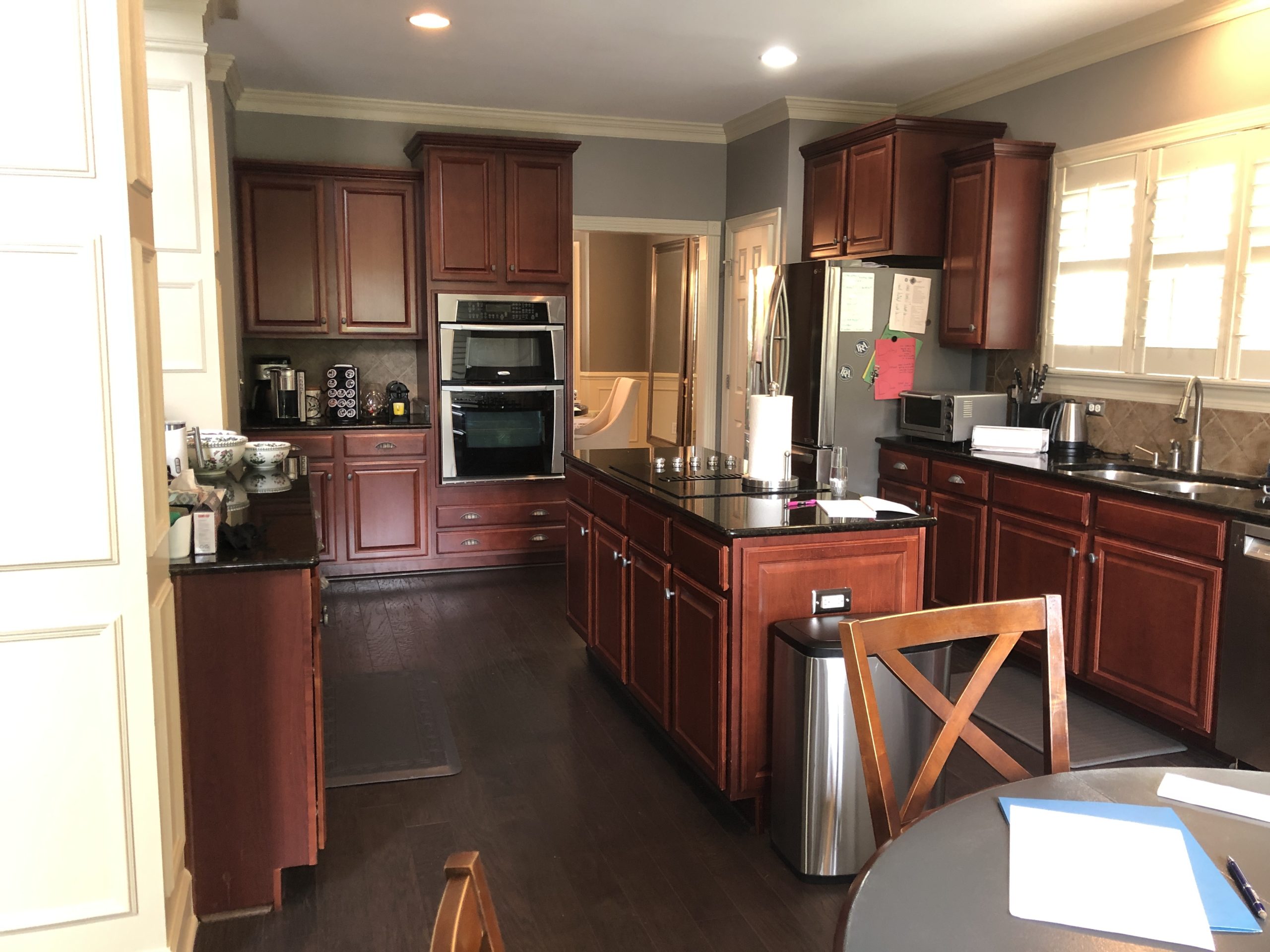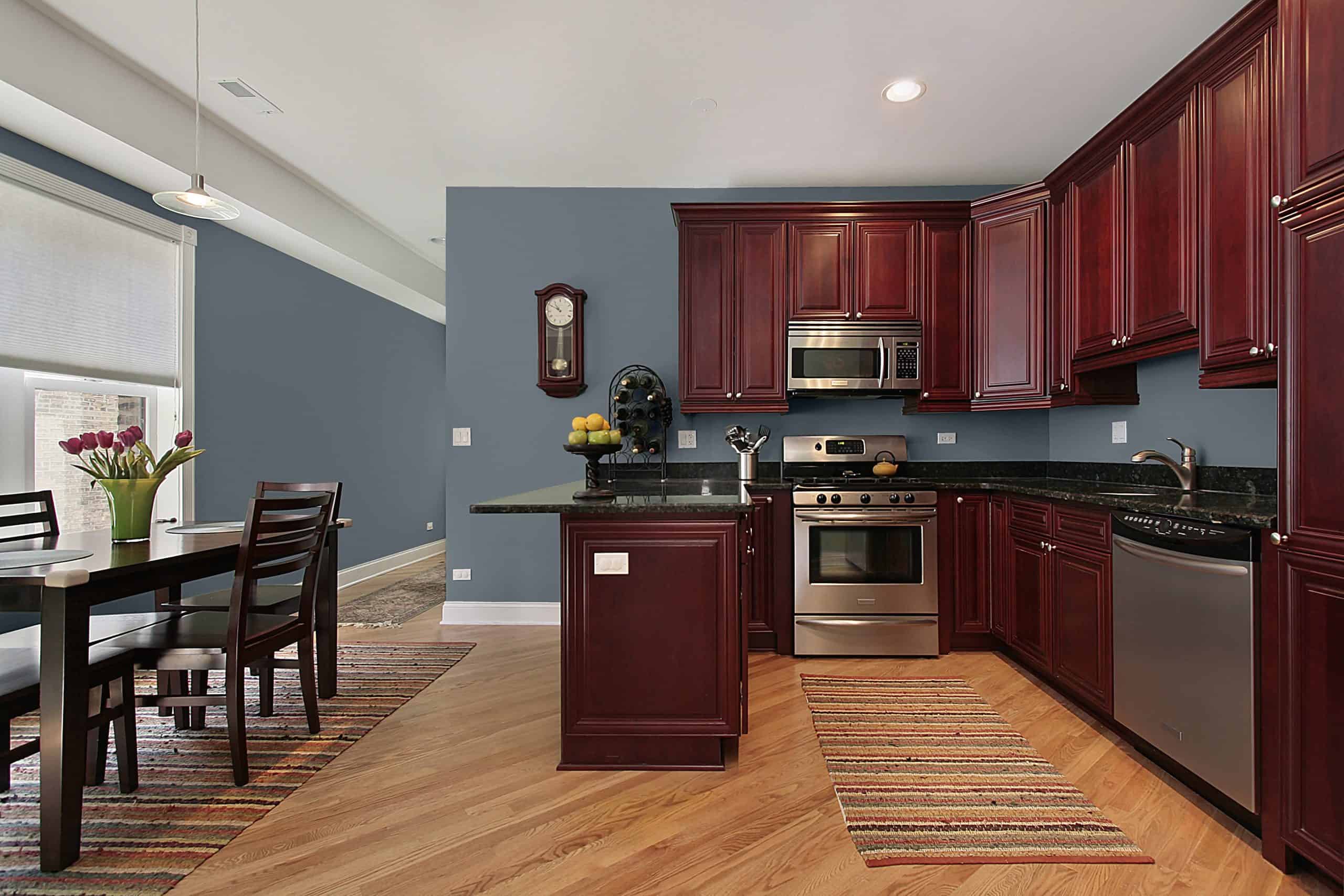Surface Preparation for Painting Cherry Cabinets: Can You Paint Over Cherry Cabinets

Painting cherry cabinets requires meticulous preparation to ensure a smooth, durable finish. Proper sanding, cleaning, and filling are crucial steps that will significantly impact the final look and longevity of your paint job. Neglecting these steps can lead to paint adhesion problems, an uneven surface, and a less-than-professional result.
Sanding Cherry Wood Cabinets
Sanding is essential to create a surface that allows for optimal paint adhesion. Start with a coarser grit sandpaper (around 120-grit) to remove any existing finish and smooth out any major imperfections. Work your way up to finer grits (180-grit, then 220-grit) to progressively refine the surface. Always sand in the direction of the wood grain to avoid scratches. Use a sanding block for even pressure and consistent results. Between grit changes, thoroughly remove dust using a tack cloth or vacuum. This ensures a clean surface for the next sanding stage. A final light sanding with 220-grit sandpaper will leave the surface exceptionally smooth and ready for cleaning.
Cleaning Cherry Cabinets
Thorough cleaning is critical to remove any remaining dust, grease, or grime that could interfere with paint adhesion. Several cleaning methods are effective, each with its own advantages and disadvantages. A simple solution of warm water and mild dish soap is a safe and effective option for most cabinets. For tougher grease or grime, a degreaser can be used, but be sure to follow the manufacturer’s instructions and test it in an inconspicuous area first. Avoid harsh chemicals that could damage the wood. After cleaning, rinse thoroughly with clean water and allow the cabinets to dry completely before proceeding. A final wipe down with a tack cloth will remove any lingering dust particles.
Filling Dents and Imperfections, Can you paint over cherry cabinets
Before painting, fill any dents or imperfections in the cherry wood using a high-quality wood filler designed for painting. Choose a filler that closely matches the color of your cherry cabinets. Apply the filler according to the manufacturer’s instructions, using a putty knife to fill the dents completely. Allow the filler to dry completely, then sand it smooth using progressively finer grits of sandpaper, starting with 120-grit and working up to 220-grit. Use a sanding block for even pressure. Remove all sanding dust with a tack cloth before priming.
Primer Selection for Cherry Wood
Choosing the right primer is vital for successful paint adhesion on cherry wood. Cherry wood is known for its rich color and oils, which can affect paint adherence. A good primer will create a barrier between the wood and the paint, ensuring a smooth, even finish. Consider these options:
| Primer Type | Adhesion Properties | Drying Time | Cost |
|---|---|---|---|
| Oil-based primer | Excellent adhesion, especially on oily woods; blocks stains | Several hours | Moderate to High |
| Sheen-blocking primer | Good adhesion, covers existing sheen effectively | 1-2 hours | Moderate |
| Acrylic latex primer | Good adhesion, water-based, low odor | 1-2 hours | Moderate |
| Stain-blocking primer | Excellent for preventing bleed-through from stains in the wood | 1-2 hours | Moderate to High |
Paint Selection and Application Techniques

Choosing the right paint and applying it correctly are crucial for a professional-looking finish when painting cherry cabinets. The type of paint you select, along with the application technique, will significantly impact the durability and aesthetic appeal of your newly painted cabinets. Careful consideration of these factors will ensure a long-lasting and beautiful result.
Paint Type Selection: Latex vs. Oil-Based
Latex and oil-based paints each offer distinct advantages and disadvantages for painting kitchen cabinets. Latex paints are water-based, making them easier to clean up with soap and water. They tend to have lower VOCs (volatile organic compounds), resulting in less odor during application and better indoor air quality. However, latex paints may require more coats for full coverage on dark woods like cherry. Oil-based paints, conversely, offer superior adhesion and durability, often providing a harder, more resistant finish. They tend to level out better, minimizing brush strokes. However, oil-based paints have a strong odor, require solvents for cleanup, and have higher VOCs. For cherry cabinets, an oil-based primer followed by a high-quality latex topcoat is often a preferred approach, combining the benefits of both.
Paint Sheen Selection for Kitchen Cabinets
The sheen of your paint significantly affects the final look and practicality of your cabinets. Satin and semi-gloss sheens are popular choices for kitchen cabinets. Satin offers a subtle sheen with good durability and washability, hiding minor imperfections well. Semi-gloss offers a higher sheen, making it more durable and easier to clean, but it also shows imperfections more readily. High-gloss sheens are less common in kitchens due to their tendency to highlight flaws. The choice ultimately depends on personal preference and the desired level of durability and maintenance. For high-traffic areas like kitchens, a semi-gloss or satin finish is generally recommended for its easy clean-up.
Step-by-Step Guide to Applying Paint to Cherry Cabinets
Proper application is key to achieving a smooth, even finish. Following these steps will help minimize brush strokes and ensure even coverage.
- Prepare the surface: Ensure the cabinets are thoroughly cleaned, sanded, and primed as previously discussed.
- Apply the first coat: Using a high-quality brush or sprayer, apply a thin, even coat of paint, working in the direction of the wood grain. Avoid overloading the brush.
- Allow drying time: Follow the manufacturer’s instructions for drying time between coats. This typically ranges from 2-4 hours.
- Lightly sand (optional): For a super-smooth finish, lightly sand between coats with fine-grit sandpaper (220-grit or higher). Wipe away dust with a tack cloth.
- Apply subsequent coats: Apply additional coats as needed to achieve full coverage and desired depth of color. Each subsequent coat should be thinner than the previous one.
- Final inspection: Once completely dry, carefully inspect the cabinets for any imperfections and address them as needed.
Proper Brush Stroke Techniques for a Professional Finish
Achieving a professional finish requires attention to brush stroke technique. Consistent, overlapping strokes are key to minimizing visible brush marks.
Imagine a wall divided into sections.
First Coat: Apply paint in long, even strokes, following the grain of the wood (assuming vertical grain). Use light to medium pressure, keeping the brush at a 45-degree angle to the surface. Overlap each stroke by about 50% to ensure even coverage.
Subsequent Coats: Maintain the 45-degree angle but slightly reduce the pressure. Use shorter strokes, feathering the edges of each stroke into the previous one to blend seamlessly. Avoid heavy pressure, which can leave ridges or uneven texture.
Visual Representation (Textual):
Imagine a series of parallel lines, slightly overlapping each other. Each line represents a brush stroke. The lines are slightly angled (45 degrees), creating a smooth, continuous surface. The lines are not overly thick or heavy, representing light to medium pressure on the brush. The overlapping creates a seamless transition between strokes, minimizing visible brush marks. The lack of thick, distinct lines indicates even paint distribution.
